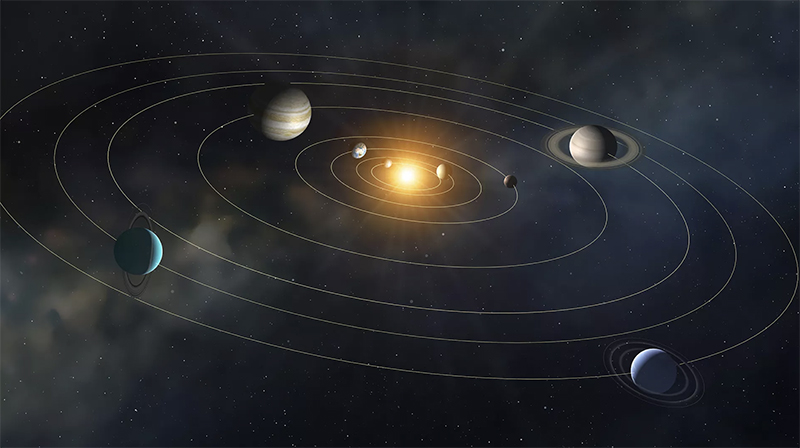The Solar System is our “cosmic neighborhood,” so to speak. It is the entire region dominated by our central star, our Sun, along with all the celestial bodies that revolve around it. In turn, the Solar System orbits around our galaxy, the Milky Way, located in one of its arms.
The Solar System was formed approximately 4.6 billion years ago, through a long series of processes that currently has the planets revolving around our Sun.
The evolution that the Sun and the planets must have undergone dates back to a primordial gas cloud composed of 75% of hydrogen and 25% of helium, which accumulated and condensed by the action of gravity, forming large amounts of mass with defined centers.

The Sun managed to accumulate enough energy to start nuclear fusion reactions, which make it shine and remain stable. The planets, on the other hand, were formed by the accumulation of material (rocky or gaseous), by the action of gravity, in a process called accretion, managing to become the planets we know today, while others did not achieve such evolution and remained as the asteroids we know today, most of them located in the main belt between Mars and Jupiter.
The Solar System has numerous celestial bodies that orbit its central star, the Sun.
Among these, the planets are perhaps the most recognized: Mercury, Venus, Earth, Mars, Jupiter, Saturn, Uranus and Neptune.
Earth is, naturally, the planet we know best, since it is our home and the only one currently known to allow the presence of life today, thanks to various internal and external conditions that help its habitability.

Planets have properties that make them unique, although we can identify 2 very different classes:
inner planets: They are also called telluric or terrestrial; They correspond to the four planets closest to the Sun: Mercury, Venus, Earth and Mars. They are characterized by being small, high-density planets, formed mainly by rocky and metallic materials. The natural boundary between the inner and outer planets is the asteroid belt between Mars and Jupiter.
Outer planets: Also called giants or gas giants, they are those located beyond the asteroid belt: Jupiter, Saturn, Uranus and Neptune. Gaseous planets lack a solid surface. They are characterized by being huge and having low density, rotating very quickly, having ring systems and several satellites.


